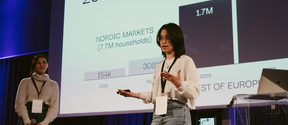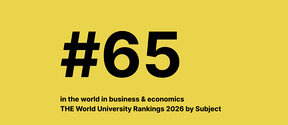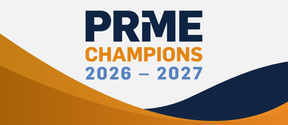Smarter energy

Over the past few decades, the world has made significant progress in developing renewable sources of energy. While fossil fuels still account for the largest share of electricity in most grids, energy providers are increasingly investing in sustainable alternatives like wind, solar and hydro power.
Until now, most research and development work in this area has focused on the production side of the energy ecosystem. But as supply-side technologies have matured, so attention has begun to shift towards other areas ― including storage, conversion and demand-response cycles ― all of which have an important role to play in the sustainable energy systems of the future.
Towards clean conversion
Tanja Kallio, Associate Professor in Aalto University's Department of Chemistry, has been working with hydrogen fuel cells and other electro-chemical conversion devices for more than two decades. Capable of both generating and storing electricity, these devices have the potential to live alongside renewables in sustainable grids, supplying intermittent energy when needed.
‘Electro-chemical devices are an extremely effective way to produce and store energy, but they're also incredibly expensive to make,’ says Kallio. ‘So either we need to lower their development costs by using cheaper materials, or we must find ways to significantly extend their lifecycles.’

The high cost of electro-chemical devices is directly related to the market price of the precious metals ― typically platinum and iridium ― used to catalyse the chemical reactions that create or store energy. The finite amount of these metals in the earth's crust not only drives up their cost, but also means that alternative catalysts will eventually be needed when mineral reserves run out.
‘If you count the world's known reserves of platinum and iridium, and factor in the predicted growth in electro-chemical devices, it's very clear there will not be enough of these precious metals to cover our needs in 10 or 20 years' time,’ she says. ‘This is driving us towards developing earth-abundant alternatives that are not geo-politically problematic, and that will last longer in whatever applications we use them for.’
Kallio is part of a research group that has been working with several small- and medium-sized companies to reduce the role of these metals in the catalytic process. In laboratory experiments, the group has been able to successfully create ways to store energy in hydrogen using no platinum at all. But as these processes are difficult to recreate at scale, Kallio is instead focusing the team's efforts on a nanomaterial-based alternative that reduces the amount of platinum to just 10% of current levels.
Closing the loop
Recycling precious metals from end-of-life devices is already an important step in sustainability, for reasons of both efficiency and safety. But this practise becomes more challenging when the amount of metal in a device is reduced.
Kallio is addressing this through the CloseLoop consortium, a project funded by the Academy of Finland's Strategic Research Council. The group is collaborating with Aalto University's Associate Professor Mari Lundström and Professor Maarit Karppinen on developing recycling processes that can effectively separate rare materials like lithium and cobalt, purifying them to a level where they can be reused in lithium-ion batteries.
Armi TemmesMajor technology shifts like this not only change the way people think and act, they also change the actors behind the scenes.
'Waste material contains precious metals in very low quantities, which renders their separation difficult,’ she says. ‘For lithium batteries, material with high purity are required, as impurities reduce a battery's lifespan. Our ongoing research demonstrates that precious metals can be recovered form battery waste and processed to active materials that have excellent initial performance.’
Energy in transition
In addition to the work Aalto University is doing on electro-chemical devices and their catalysts, there are also research groups taking a sociological perspective on the world's transition to sustainable energy. Professor Armi Temmes from the School of Business leads much of this work.
‘As intermittent energy production from renewables is increasing all the time, so the ways to manage this energy are becoming more and more important,’ says Temmes. ‘Major technology shifts like this not only change the way people think and act, they also change the actors behind the scenes.’
A case in point is the way in which the electricity production and heat generation industries are becoming more intertwined. Until now, electricity has been generated from heat, which in turn has been generated through burning various fuels. But today, with more and more renewable power being fed into the grid, electricity is increasingly being used to produce heat with heat pumps, for example. This supply-side shift is particularly pertinent in Finland, where central heating is so important for much of the year.
Working together with VTT, Finland's state-owned research centre, Temmes and her team have modelled a way in which the entire grid for both electricity and heating could, in the future, be based on renewable energy sources.
‘To eliminate coal and other fossil fuels in Finland, we need much deeper integration in the production, use and distribution of electricity and heat,’ she says. ‘We would need a massive increase in wind energy for generating electricity to power large-scale heat pumps, which are very flexible and could meet a lot of our heating needs.’
Another area of Temmes's team's work is studying demand-response flexibility in the power grid, i.e. finding ways to smartly adjust electricity consumption without a noticeable effect on people or commerce. Systems for automatically managing these adjustments are beginning to come into use with industrial customers, such as shopping centres, but it will be some time before we see widespread adoption at the consumer level.
‘Demand-response models are developing, but they're still very difficult to introduce at the consumer scale, as the equipment behind them is far too expensive to make this business profitable,’ says Temmes. ‘So we're looking into the emerging business models in this area to understand how they could develop.’
Planning policy together
Aalto University has also been active in studying the policy implications of the transition to a sustainable energy grid, acting as a facilitator in bringing actors with different interests together at the same table. Under the leadership of Professor Sampsa Hyysalo at the School of Arts, Design and Architecture, paths were developed for eight different areas of the energy transition challenge. The advantage of this collaborative method is that the participants can constructively find ways to achieve the ambitious but necessary objectives for mitigating climate change.
‘The crucial thing is that in the future we need to look beyond just energy production,’ says Temmes. ‘We now have a way to produce clean energy, but we just don't have the rest of the system in place yet.’
Text: Andrew Flowers
From clean energy to personalized medicine – a book about the power of the university
The Aalto Effect is a tribute to the ambitious and uncompromising work of dozens of researchers.

Read more news

Aalto University to host INNOVA Europe 2026 Grand Final in Espoo
Aalto University will host the INNOVA Europe 2026 Grand Final in Espoo, bringing together leading student-led startups from European universities.
Business & economics and computer science ranked in top 100 globally
The Times Higher Education ranking measures universities with 18 indicators, including international research and citations
The School of Business renews its status as a Champion member of the global PRME network for sustainability education for 2026–2027
Only two other Nordic universities were awarded Champion-level membership






